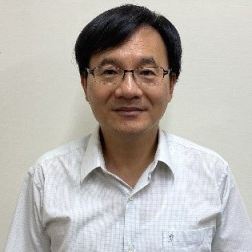Need Help?
13 July 2021
Meet the Editors | Interview with Prof. Dr. Wei-Hsin Chen—Section Editor-in-Chief of "Artificial Intelligence and Smart Energy" in Energies

I am Prof. Dr. Wei-Hsin Chen, a Distinguished Professor at the Department of Aeronautics and Astronautics, National Cheng Kung University, Taiwan. My research topics include bioenergy, hydrogen energy, clean energy, energy system analysis, and atmospheric science for fuel and environmental sustainability. As the Section Editor-in-Chief of the "Artificial Intelligence and Smart Energy" Section, I am hoping to direct the overall strategy of this section by sustainably and efficiently reviewing and deciding upon the submitted manuscripts and ensuring that the manuscripts accepted are of high academic integrity and relevance to the global challenges as addressed by the Sustainable Development Goals (SDGs).
2. What will Energies have to offer that will make it stand out from other journals?With so many academic journals out there, deciding where to submit your manuscript is not an easy task. For Energies to stand out among other journals, two main factors to be considered will be the journal’s ranking and impact factor. It is in Q1 in the “Control and Optimization” research category and Q2 for “Energy (miscellaneous)”, “Energy Engineering and Power Technology”, “Fuel Technology”, “Renewable Energy”, “Sustainability and the Environment”, and “Electrical and Electronics Engineering” research categories. The lower the research quartile, the higher the journal in the top rankings.
3. Energy research has been going on for a long time—what breakthroughs have been made recently?Here are some of the research breakthroughs in energy research recently.
First, a breakthrough by researchers at UVA's College and Graduate School of Arts & Sciences, the California Institute of Technology, and the U.S. Department of Energy's Argonne National Laboratory, Lawrence Berkeley National Laboratory, and Brookhaven National Laboratory could eliminate a critical obstacle from the solar energy conversion technology, a discovery that represents a giant stride toward a clean-energy future. The new process involves creating active catalytic sites at the atomic level on the surface of titanium oxide nanocrystals, a technique that produces a durable catalytic material and one that is better at triggering the oxygen evolution reaction.
Second, the graphene aluminum-ion battery cells from the Brisbane-based Graphene Manufacturing Group (GMG) are claimed to charge up to 60 times faster than the best lithium-ion cells and hold three times the energy of the best aluminum-based cells. Based on breakthrough technology from the University of Queensland’s (UQ) Australian Institute for Bioengineering and Nanotechnology, the battery cells use nanotechnology to insert aluminum atoms inside tiny perforations in graphene planes.
Lastly, in their latest paper published in the journal Energy Storage, IIASA researcher Julian Hunt and colleagues explored one of the lesser-known but promising sustainable energy storage systems, namely Buoyancy Energy Storage Technology. Buoyancy Energy Storage Technology (BEST) can be particularly useful to store intermittent energy from offshore wind power plants, especially in coastal regions and small islands. As an added benefit, the same technology can be used to compress hydrogen and transport it underwater.
4. What are the trends of the future and advances to watch out for in this area?Most visible in the energy and climate space is the impact of AI and machine learning on how energy is supplied. That’s because more intelligent energy supply systems, in effect, shift the supply curves outward. They take resources that are hard to tap and lower the cost. For example, machine learning systems can improve the ability to map and understand the size and value of underground deposits of oil and gas—in turn, making it easier to tap those resources at a lower cost. The same logic applies not just to traditional hydrocarbons that make up the backbone of the world’s energy system but also to new non-hydrocarbon energy supply options. For example, AI-assisted training for the design and operation of wind and solar farms can make these systems much more efficient in how they take financial resources (i.e., capital) and generate electricity. In the case of wind farms, the turbine heads can be oriented actively to capture a greater fraction of the incoming wind—something that has been doable for a long time and can be made more efficient with machine learning. Similar learning can improve the quality of solar forecasting—for example, leading to better day-ahead and hour-ahead predictions of how clouds and other weather formations affect solar output. In turn, better forecasts can make it easier and more lucrative for solar generators to participate in electricity markets. At the moment, I sense that AI is having a bigger impact on oil and gas than in renewables because of the kinds of activities that are unlocking new hydrocarbon resources—notably the shale revolution in oil and gas which requires mapping complex underground reservoirs and tailoring drilling methods—are particularly well-suited to the recursive, complex learning processes that AI is well-suited to deliver.
5. What is on your reading list for the Energies community?(1) Faculty and students in universities
(2) Researchers in universities and institutes
(3) Governments and Policymakers

